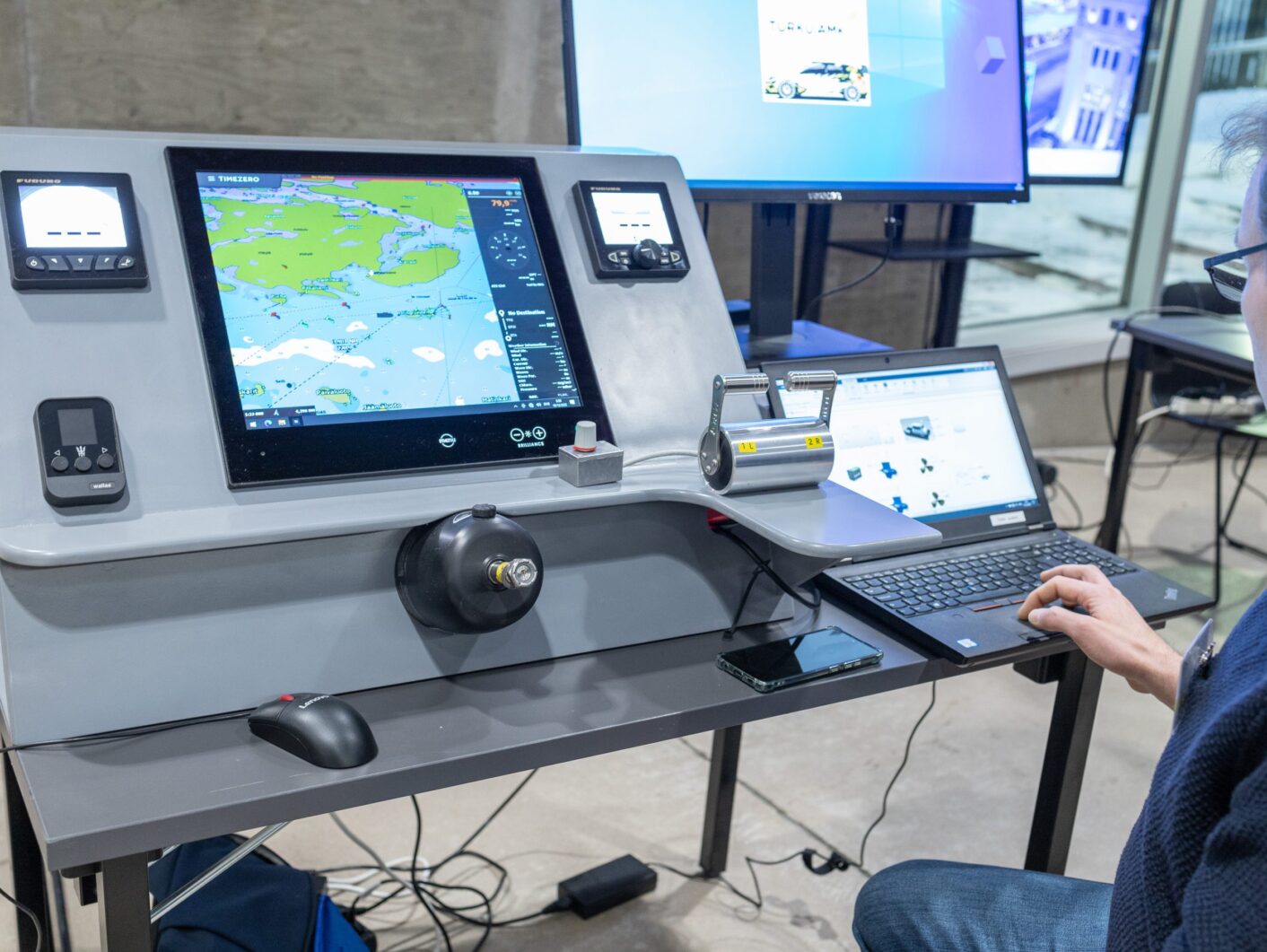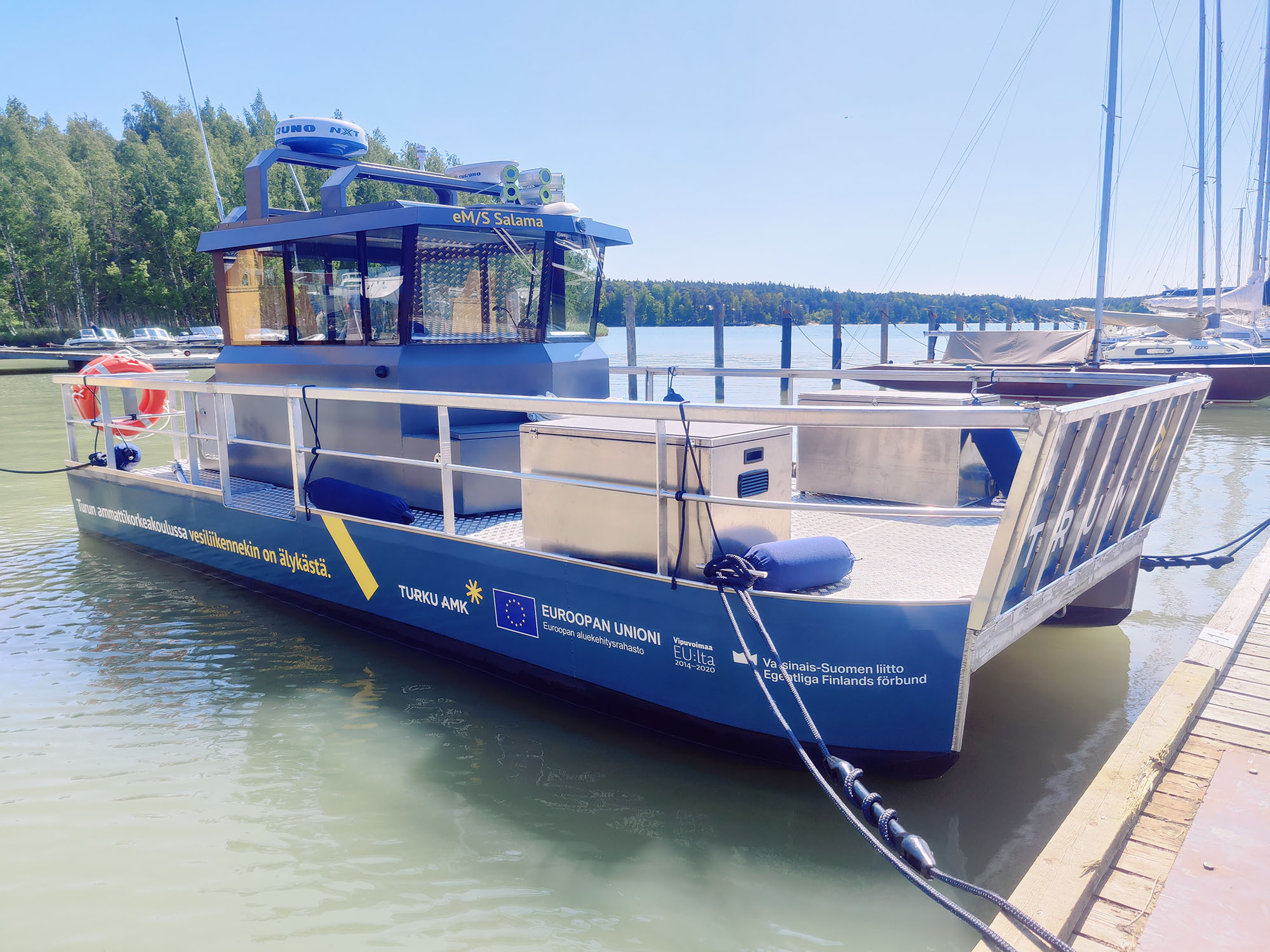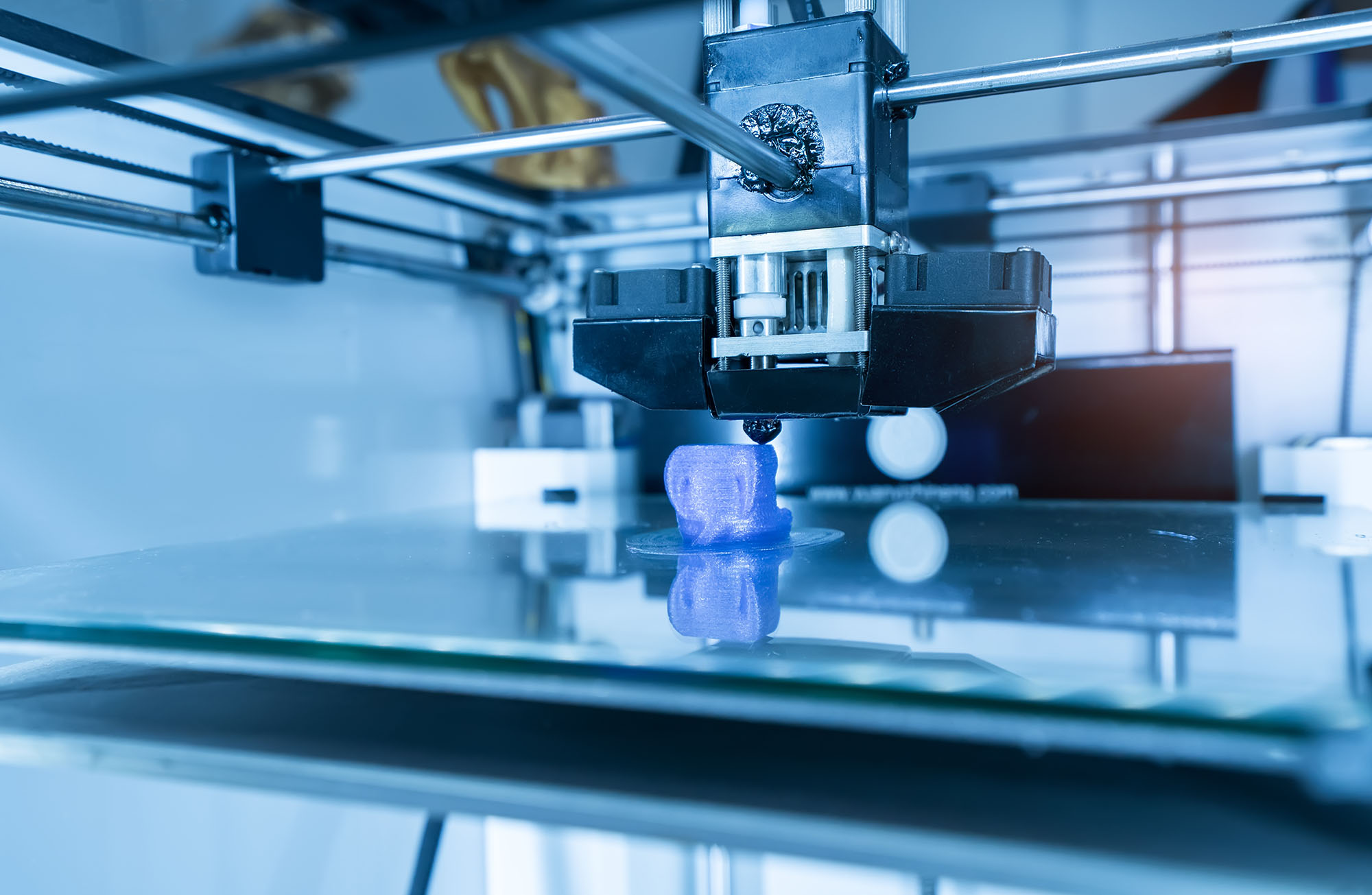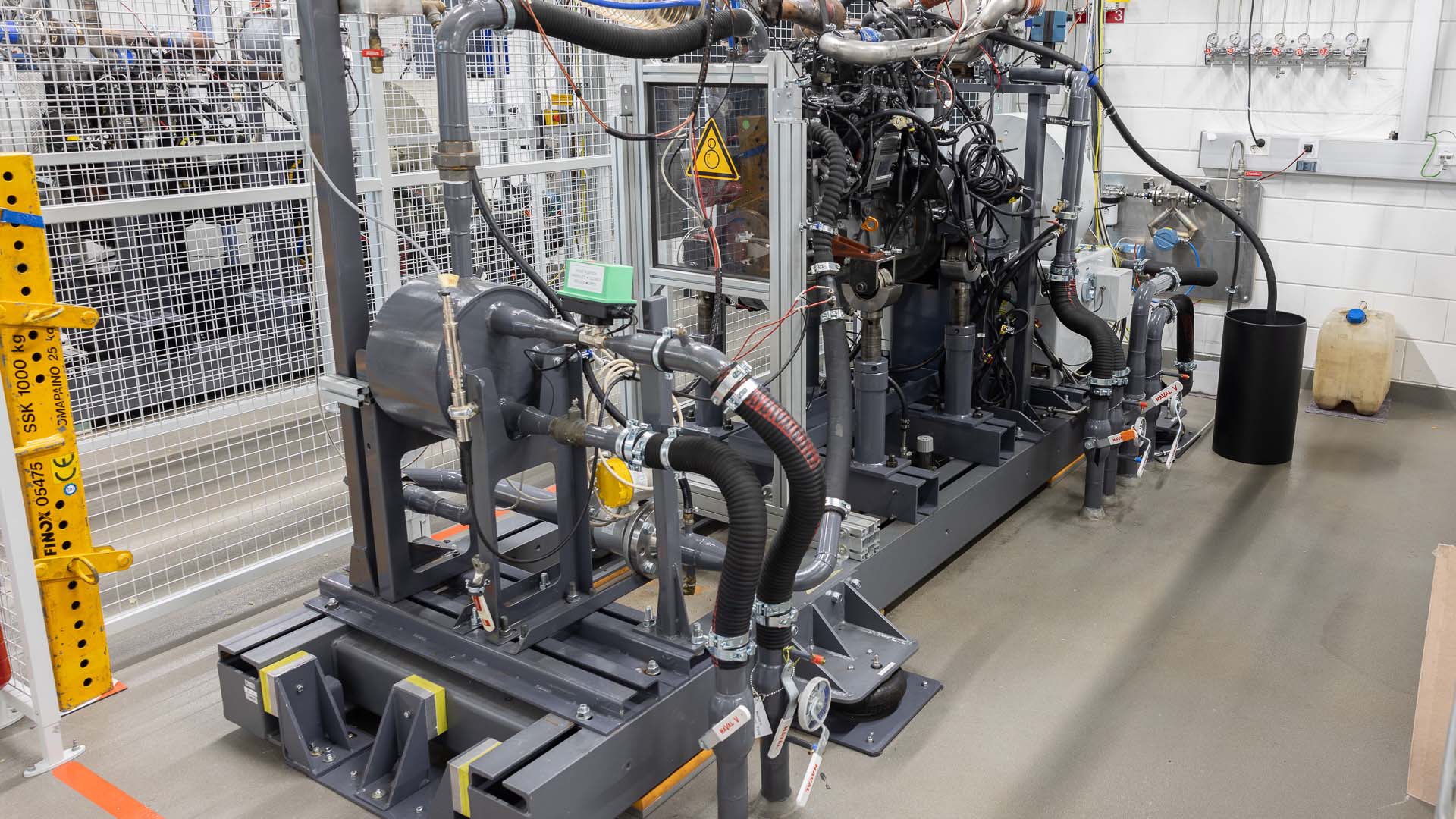Will AI start operating Turku’s iconic city ferry Föri in the future? Autonomous waterborne transport is being researched and developed at Turku University of Applied Sciences.

Published:
Edited:
Text and photos by Martti Komulainen
A test vessel is being built in the hall of the Tuulissuo industrial estate in Liedo, laying the foundations for future smart and autonomous waterborne transport.
The home base for autonomous shipping projects (ARPA and TEHOTEKO) at Turku University of Applied Sciences is the Wireless Communications and Cybersecurity research group led by Senior Lecturer Jarkko Paavola , as the topic involves a lot of network and sensor technology, as well as cybersecurity issues.
The projects are multidisciplinary, involving the Future Interactive Technologies and the Engine and Power Line research groups.
Alongside the development of the physical vessel is the simulation around its digital twin (the virtual counterpart). The electric motor and control solutions that will power the test vessel are being worked on by the Engine and Power Line research group.
The projects also involve the maritime expertise of Yrkeshögskola Novia and Åbo Akademi, which has built and developed algorithms to steer the autonomous “Åboat” test boat, which is smaller than the test boat under construction at Turku University of Applied Sciences.

More safety for waterborne transport
To be generally accepted, an autonomous vessel must be at least as safe as existing vessels. Preferably safer.
-“Intelligence must be better than human intelligence to react to different situations,” says Jarkko Paavola.
-The main motivation for developing autonomous waterborne transport is safety. The vast majority of maritime accidents are caused by human error.
Autonomous waterborne transport is being studied not only in Turku, but also elsewhere. In Norway, for example, a small cross-channel city ferry has been used for research. At an ARPA seminar on autonomous transport in Turku, a Norwegian researcher described how he exposed himself by testing an autonomous city ferry. It worked out well in the end – the vessel was able to swerve or stop when the researcher’s kayak was detected.
AI must be better than humans at reacting to different situations”
In larger vessels, various maintenance and servicing tasks require the presence of people, so autonomous vessels would not operate entirely without people. The Turku AMK test vessel will not operate without a human being either. The projects will build a remote operation centre in Turku to monitor the vessel’s movements. In addition, a human will always be present on board the vessel during the test phase to ensure safety.
An AI-driven ship needs a wide range of data
Before autonomously AI-guided waterborne transport can be real and safe, a lot of data on the situations and conditions ahead will be needed. The challenge is to generate all possible situations for the AI to process and to teach the AI situational awareness and the ability to react intelligently to situations.
One of the bottlenecks in the development of autonomous transport is data. The brain of the autonomous vehicle, the AI, is thirsty for data – data about regulations, data about movement, data about positioning in relation to other objects.
Launched in the summer of 2023, the Turku University of Applied Sciences test vessel will contain an arsenal of sensors and instruments to collect data – GPS, laser beam, radar, thermal imaging, weather station, microphones, 3D echo sounder and cameras will provide a wide range of data on conditions, location and status for the operation of the vessel.
The data collected will be published as open access datasets, freely available to researchers.
Data alone is not enough; data from different sensors needs to be “fused” – combined and analysed and integrated into route planning and obstacle avoidance solutions.
Is autonomous smart ship the future?
-Larger passenger ferries are unlikely to move autonomously. This will mainly be the case for short river crossings or canal crossings, and perhaps later also for freight traffic, says Jarkko Paavola.
As the autonomous vessels of the future will require remote operation, reliable and cyber-secure connections between the vessel and the remote operation centre will become critical. If cybersecurity is not ensured, the risks are significant: for example, by interfering with the navigation of the ship, incidents can occur.
There are high expectations for autonomous waterborne transport, not only for safety reasons. There are also expectations of efficiency. In addition, if vessels are powered by electricity, there are also environmental considerations.
Space efficiency comes when there is no crew on board and the accommodation they need. The bridge would also be eliminated. The space saved can be used for cargo transport. All this changes the design of ships – the whole “concept” of the ship and the whole waterborne transport business.
“The components of autonomy are slowly being built up?
Although the technology needed for autonomous waterborne transport is in principle already in place, we are not yet there or even halfway there. In addition to data and testing, legislative development is also needed. In the next few years, we will not yet see autonomous vessels except for research purposes.
-The components of autonomy are slowly being built, Jarkko Paavola reminds the more hasty.
Finland aspires to be one of the pioneering countries in research on automated and autonomous vehicles, but comprehensive environments for reliable testing and development of research results and products have been lacking. This is precisely the gap that Turku University of Applied Sciences projects aim to fill.
The article was previously published on 30.1.2023 in talk.turkuamk.fi and edited on 27.8.2024.
Get to know our research
Read next
-
Press Release

Joint research infrastructure funding for Turku higher education institutions from the Research Council of Finland
The NEMESIS research infrastructure collects data related to the state of the environment and maritime safety in the archipelago. NEMESIS, a collaboration between three universities, enables long-term monitoring…
-
CaseNews

Turku UAS collaborates with EOS Oy, a company specialising in 3D printing
Turku University of Applied Sciences (Turku UAS) and Electro Optical Systems Finland Oy (EOS Oy) are strengthening their cooperation by signing a partnership agreement. In addition, EOS has…
-
Press Release

Hydrogen for internal combustion engines
The use of hydrogen as a fuel in internal combustion engines offers significant advantages over the use of hydrogen in fuel cells. A new research project at Turku…
